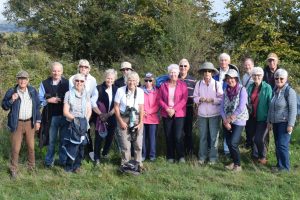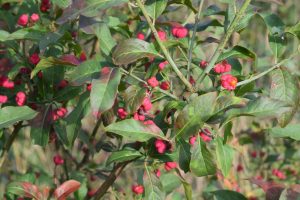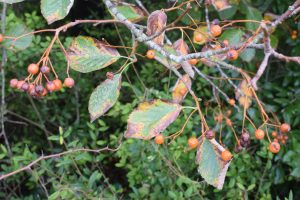Taking advantage of a glorious sunny and warm afternoon 18 members of Ferring Conservation Group met at Highdown Hill car park. With Tricia Hall as their knowledgeable guide they were led along the upper path and asked to consider the different ways in which seeds disperse throughout the countryside. Tricia explained the various ways that trees and plants attempt to distribute their seeds to maximise their chances of survival. Noting the kaleidoscope of colours, red, russet and yellow as the leaves of Ash, Sycamore, and Holm Oak were changing colour. 
As the Group progressed along their route they spotted the long, silky hairs which form the grey tufted balls that are known as Old Man’s Beard that are so conspicuous in hedgerows in autumn. These silky hairs assist in seed dispersal and interestingly the French name for this plant is ‘herbe aux gueux’ – the beggar’s herb. Beggars were said to use its acrid sap to irritate the skin to give it a sore and ulcerated look in order to induce sympathy and encourage a donation from passers-by.
Among the hedgerows the vivid pink fruits of the Spindle, the blue-black fruit of the Sloes and the red Rosehips could all be seen to add to the colourful autumn display. A nearby Robin was in good voice as the Group came across several Red Admiral butterflies resting on a bush enjoying the heat from the sun. Bracket fungus could be seen attached to the trunk of a large Holm Oak tree and Tricia explained that autumn is the time when the fruit of this important group of living organisms releases thousands of billions of microscopic spores into the air to distribute and reproduce. As two Buzzards were spotted circling high above, Magpies and Woodpigeon were seen on the ground foraging for food. The small green catkins of a Hazel tree made an interesting contrast as well as the black clusters of Privet fruit.
Jane Hayman from the Group said ‘we were fortunate indeed to have such a glorious sunny day for our walk and thanks to Tricia we came away with more knowledge of how to identify trees and plants and an understanding of the ways in which they reproduce themselves’.
